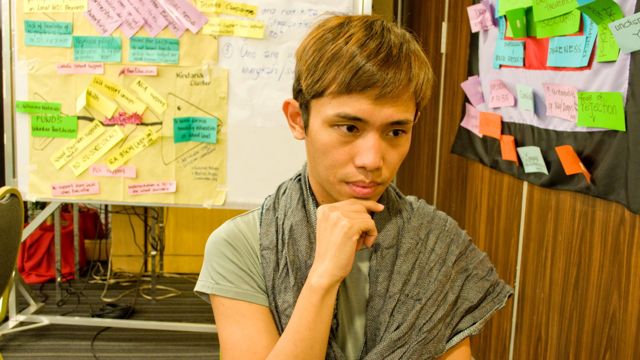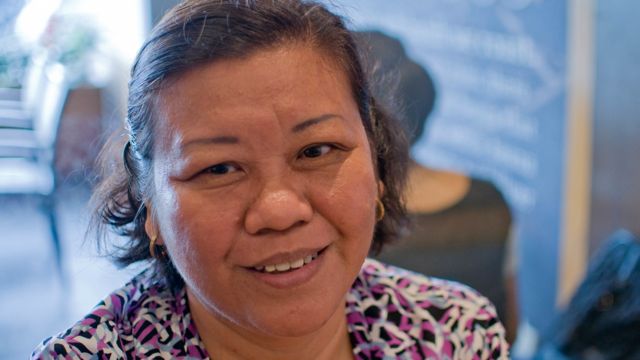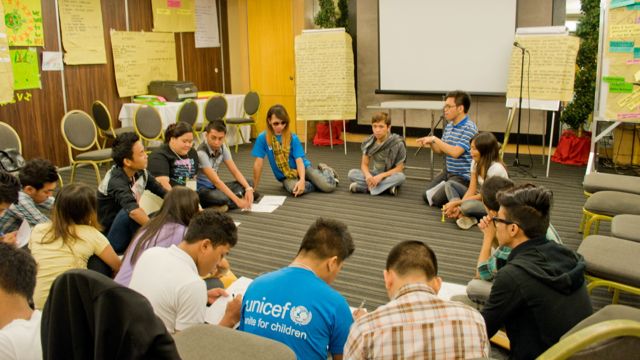SUMMARY
This is AI generated summarization, which may have errors. For context, always refer to the full article.
MANILA, Philippines – “No other disease is more wrapped in social stigma than AIDS.”
Phillip Palmos, chairperson of the Youth AIDS Filipinas Alliance, thinks it’s unfair. Like others suffering from disease, people living with HIV have to take medication.
They live knowing no cure exists for their condition. But they are shunned and judged, because in a society where religion reigns and sex is a taboo topic, they are seen as sinners instead of sufferers.
“From the start, AIDS is seen not as a disease but a morality issue,” Palmos said. “People die from it, but it’s always been seen as a judgment on the lifestyle of the person who contracted the disease.”

It’s been 30 years, but the social stigma attached to people living with HIV is still as resilient as the AIDS epidemic.
Three decades of medical advances have seen the rise of antiretroviral drugs that prevent viral replication, but there still is no definitive cure for HIV.
Since 1981, 25 million worldwide have died from HIV. According to the 2012 United Nations Global Results report on AIDS, 34 million people are afflicted with AIDS.
The 2012 report also has positive news: worldwide, incidents of HIV infections have dropped by more than 50% in a decade. The Philippines, though, bucks the trend, with at least 9 new cases being reported every day, compared to only one new case every 3 days in 2000.
What makes finding an AIDS cure especially difficult is the virus’ ability to integrate itself with an infected individual’s DNA. New research though may provide a better solution.
A possible cure?
In Los Angeles, private biotechnology firm Fil-Am Tech touts its Fabunan Antiviral Injection as a cure that would destroy the virus in a year of treatment.
Fil-Am Tech vice chairman Dr Farah Holmes said the FAI helps flush out the dormant virus and penetrates viral reservoirs to prevent it from multiplying.
The inspiration for the drug comes from previous treatments of snake bites by the company’s founders. Dr Ruben Fabunan, a Bachelor of Science graduate from the University of the Philippines first used the anti-viral drug to treat a patient with a cobra bite in 1975.
When AIDS hit the US 6 years later, Fabunan figured that the same treatment might work, as the AIDS virus also envelops the blood cell.
In 1999, he treated his first HIV patient in a clinic in San Marcelino, Zambales. He has since treated 10 patients both in the Philippines and Africa. All but one are alive today.
The Fabunan drug is only one of several breakthroughs in the field of HIV cures. Experiments suggest bone marrow transplants and a drug called vorinostat may be promising as well.
Prevention tools
Progress in AIDS research comes at a crucial time for the Philippines, with the Department of Health noting a continuing rise in the number of HIV cases in the country. If the trend continues, up to 37,000 new cases of HIV may be reported in 2015.
The trend has been blamed partly on the lack of awareness and access to tools that prevent the spread of the virus. The World Heath Organization recommends the use of condoms, but its use in the Philippines is at a low 2.8%.
For religious groups, the battle against AIDS is a battle for behavior change and the use of conscience – no condoms needed.
Agnes Mendoza of the Camillan Fathers’ Woodwater Center for Healing said it’s not enough to prescribe treatments and advocate condom use without first teaching the youth to use their conscience and be responsible in their sexual activities.
The Woodwater healing center provides counseling and testing for persons living with HIV. Those who test positive are sent to San Lazaro Hospital for treatment.
But because it is affiliated with religion, Mendoza said there are some things they cannot do, such as advocate the use of condoms, despite the WHO’s claim to effectiveness.

“It’s not fail-safe,” Mendoza said. “We don’t advocate condom use without behavior change. Behavior change is an important factor.”
“Our advocacy is ABC: abstain, be faithful, use your conscience,” she added. “Other groups advocate condom use. For us, conscience is important. People shouldn’t be reckless.”
But Palmos said AIDS support groups also support abstinence and responsible sex. But he added they do not want to take away the availability of choice.
“We also support abstinence, but do not disregard the fact that for some people, it will not work,” Palmos said. “The question is, what is your alternative for people who can’t always abstain? They should have a choice to actively protect themselves.”
Youth against AIDS
As science makes advances on the treatment front, people with HIV try to do their part in changing societal attitudes toward the virus.
Palmos said awareness and knowledge are key components in helping stop the spread of the disease. Because of various misconceptions about AIDS, the task of correcting them falls on the youth.
Palmos said it’s youth groups and community networks that engage local government units and prompt them to take more decisive actions.

On November 27, Palmos co-facilitated a leadership training course gathering together with youth representatives from Luzon, Visayas and Mindanao. The group aims to draft plans to spread awareness about AIDS and help ease the social stigma.
During the workshop, representatives outlined steps they plan to take to make their advocacy work – from contacting mayors of their cities, conducting information campaigns in schools, and helping ensure the availability and accessibility of health services.
Palmos however wants more of the youth to get involved in the fight against AIDS – whether they are HIV positive or not.
“There’s a perception that only those who have the disease care about the advocacy,” Palmos said. “But it’s not only those who are HIV positive who help out. Family and friends are affected as well, and that’s why they help.”
Palmos said beginning to get government help for people living with HIV can go hand in hand with changing attitudes toward the disease. Giving a face to the virus may be one of the most effective ways to show AIDS as a disease that needs to be taken seriously, he added.
“Bago na ang mukha ng HIV,” Palmos said. “Bumabata siya, at dapat makita ng kabataan na totoo siya.” (The face of HIV is changing. It’s getting younger and the youth ought to see it as real.) – Rappler.com
Add a comment
How does this make you feel?
There are no comments yet. Add your comment to start the conversation.